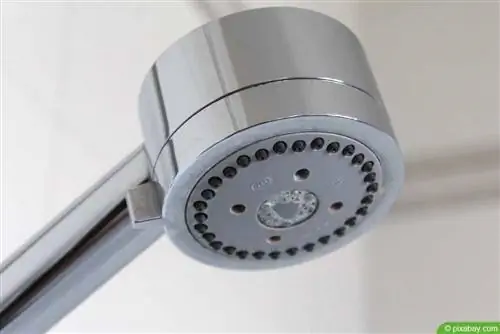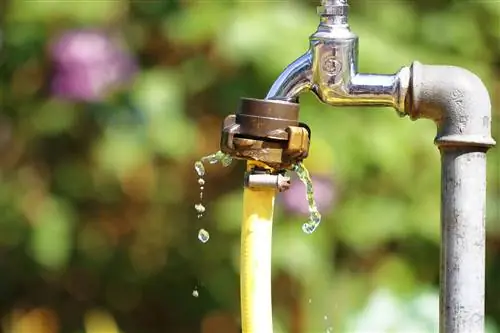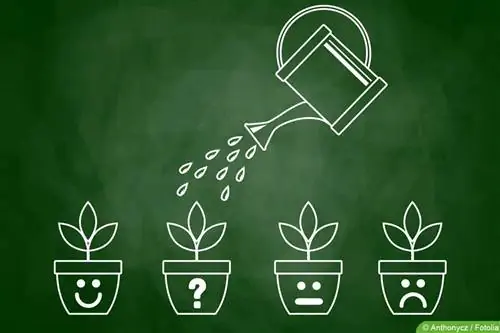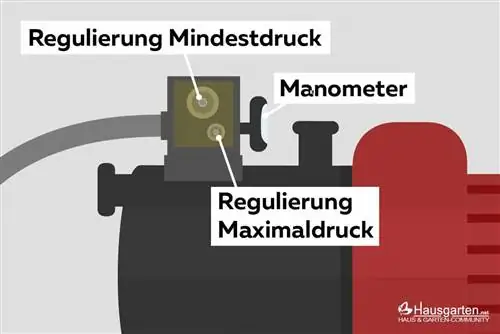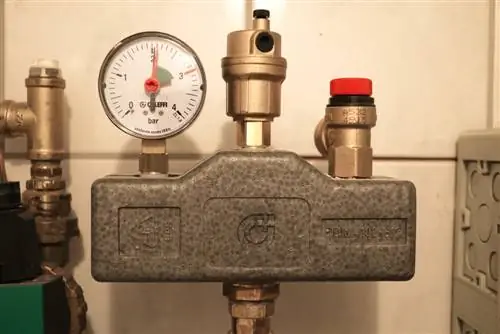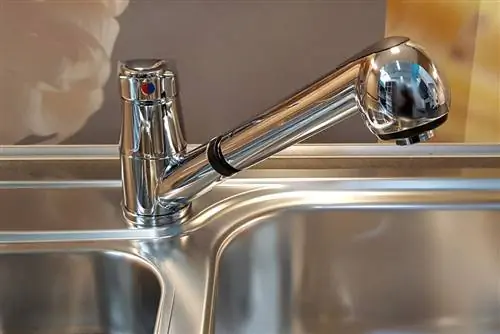- Author admin [email protected].
- Public 2023-12-17 03:39.
- Last modified 2025-01-24 12:45.
Showering is only pleasant with a lot of water pressure. However, if a small trickle flows from the shower head, an increase in pressure is necessary. If there are certain causes, you can solve the problem yourself.
Shower head & hose
The common causes of low water pressure in the shower include calcified and clogged shower heads and hoses. Limescale deposits on the shower head are usually visible from the outside. To check the inside, disconnect the shower head from the hose. Then turn on the tap. If the water flows again with more pressure, the shower head is the culprit. You can determine whether the hose is clogged or calcified by twisting it off with a pipe wrench. If the water then flows with sufficient pressure without the hose, it is the trigger. Sometimes a flow restrictor installed in hand showers is responsible for the low water pressure. This saves a lot of water, but the enjoyment of showering is significantly reduced.
- Descale the shower head and hose regularly
- Soak in solution with highly concentrated vinegar for several hours
- The effect of vinegar is increased by baking soda
- Attention: Foams heavily on first contact!
- Alternatively use chemical limescale remover
- Replacing extremely clogged shower heads and hoses
- Remove any built-in flow limiter
Note:
When twisting off the hose with the pipe wrench, be careful not to scratch or even damage the screw.
Boilers & instantaneous water heaters
If the low pressure only occurs with hot water, this may be due to a defect in the hot water system. This problem depends on whether the hot water is produced locally using a boiler or instantaneous water heater. If the devices have advanced calcification, they can usually be removed yourself. Possible causes of low water pressure can also be brittle and leaky pipes. In larger residential complexes, hot water is often generated centrally via the heating system. These systems are usually checked by the responsible caretaker, landlord or manager, who is also responsible for the subsequent repairs.
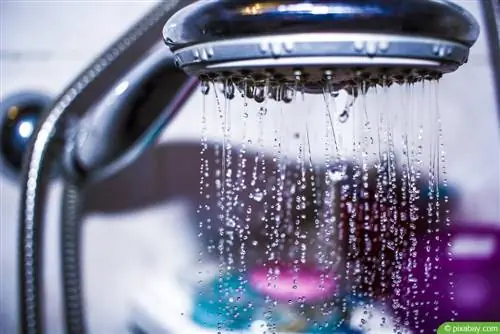
- Open the housing of the device and check for limescale
- Descale hot water systems regularly
- Check lines with caution, do not run any risk
- Escaped water must never come into contact with the electrical system
- Unplug the device before repairing
- Serious damage to the device or domestic water pipe is also possible
- Such defects can only be repaired by a specialist
Stop valve
In many apartments, shut-off valves are installed, which determine the state of the water pressure. These valves are usually centrally accessible and often not turned on fully. As a rule, these devices are located directly in the bathroom or kitchen; they are rarely located in the basement. If the valve cannot be found or reached, ask the landlord for clarification.
- Check the valve to make sure it is turned on correctly
- Turn it up if that's not the case
- Afterwards check the water pressure again
- It's better to turn it on carefully and gradually
Tip:
When unscrewing, be careful not to overtighten the shut-off valve to avoid fatal damage.
Pressure increasing system
If the water arrives in the household at a low pressure, a pressure increase system can provide the solution you are looking for. This system is a special pump that can be used to sustainably increase the water pressure. Installing the device can sometimes be a bit complicated depending on the structure of the water pipes.
- The purchase price of the system is quite high
- Installation not always possible, check before purchase
- Higher pressure results from more water per unit of time
- Water is temporarily stored in an additional container
- If you are renting an apartment, clarify installation with the landlord beforehand

